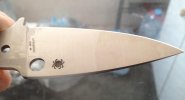other memory
Gold Member
- Joined
- Jul 15, 2012
- Messages
- 1,809
I found some stuff about Vanadis 4 Extra. If my information mining is correct, 4V's characteristics are based off of V4E. Bear in mind they are not the same. Chris, any thoughts on the matter?
http://www.zknives.com/knives/custom/fhutilv4e.shtml
http://xxxknives.blogspot.com/2011/01/vanadis-4-extra.html
http://www.zknives.com/knives/custom/fhutilv4e.shtml
http://xxxknives.blogspot.com/2011/01/vanadis-4-extra.html
Last edited:

